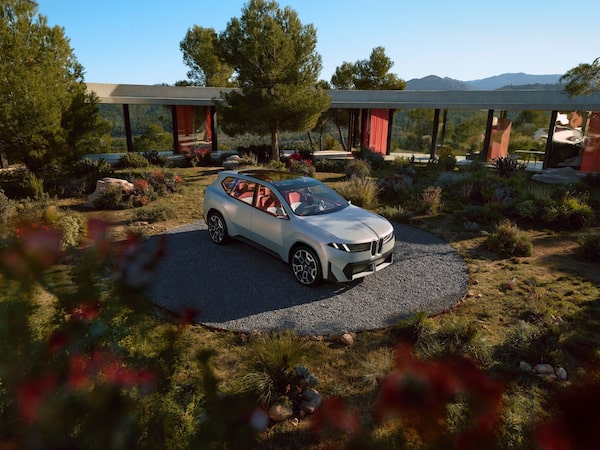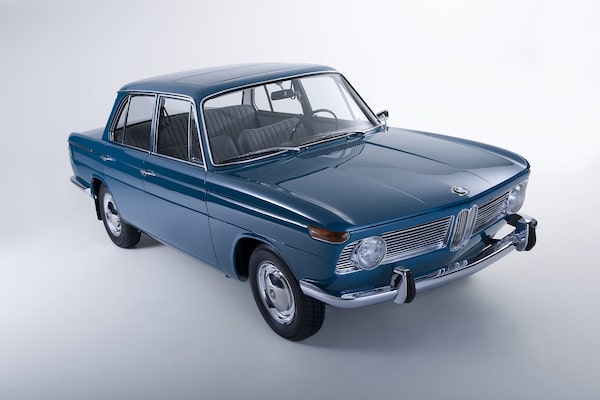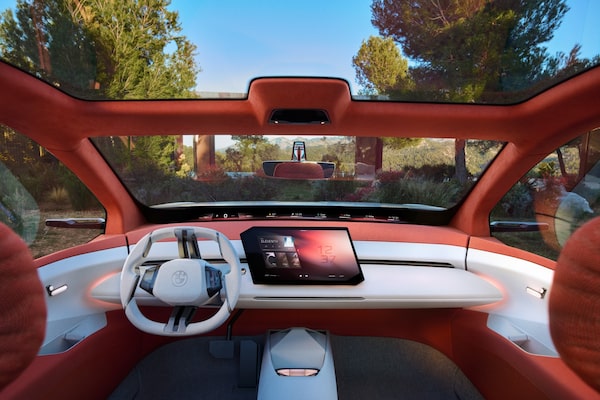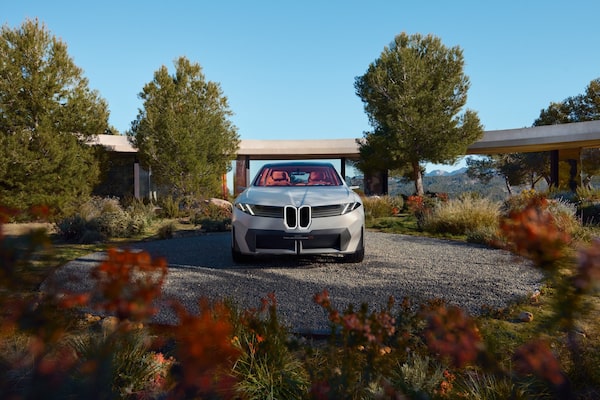
The BMW Neue Klasse SUV. Everything about the Neue Klasse series is new, from the design and dedicated electric vehicle platform to the electrical architecture, batteries and in-car technology.Courtesy of manufacturer
Hate the way the BMW iX looks? Despise the beaver-tooth grille of the M4? Direct your complaints to Adrian van Hooydonk. The Dutch car designer joined BMW Group in 1992 and has overseen the shape of every new BMW, Mini, Rolls-Royce and BMW motorcycle since 2009 when he became senior vice-president of BMW Group design. If you send him a complaint, don’t expect it to sway him, at least not as much as the sales figures.
“The cars that we have in production now are selling rather well,” van Hooydonk said in a video call just after BMW Group’s annual news conference late last week.
BMW sold a record 2.25 million vehicles worldwide last year, an increase of 7.2 per cent, beating rival Mercedes-Benz’s total yet again.
Now, just as we might have been getting used to these gaping grilles and busy lines, van Hooydonk and his team are taking BMW in another new design direction. Big grilles and chrome are out, and battery power, elaborate lighting and projector displays are in with BMW’s Neue Klasse series of next-generation EVs.
“These vehicles we’re going to launch starting next year will be an impulse, both in terms of technology and design, for the entire product range,” said van Hooydonk. And, yes, he also confirmed BMW’s signature kidney-grille will be getting smaller again.
During the company’s annual news conference he introduced the Vision Neue Klasse X, the latest in a long string of teasers and concepts. This one is a thinly veiled preview of the coming BMW iX3 electric SUV, the first Neue Klasse model, slated for production in 2025.

The original BMW Neue Klasse (or New Class) was sold from 1962 to 1972 and laid the foundation for what BMW has become today.Courtesy of manufacturer
Everything about the Neue Klasse series is new, from the design and dedicated EV platform to the electrical architecture, batteries and in-car technology. In the cabin, the traditional instrument cluster is replaced by a projector that puts information along the full width of the dashboard just below the windshield. Lights hidden beneath the fabric surface of the dash emit a warm glow. (Fans of cars with real buttons will lament the demise of BMW’s physical iDrive control knob, which appears to have disappeared and been replaced by a central touchscreen.)
BMW AG board member Frank Weber has said this project represents the biggest investment in the company’s history.

The interior of the BMW Neue Klasse SUV with a projector that puts information along the full width of the dashboard.Courtesy of manufacturer
“Courage is necessary,” said van Hooydonk. “While we are taking big steps. The risk we believe is manageable, or is in any case worth it.”
The Neue Klasse is, in part, an effort to close the gap to EV leader Tesla. The American brand typically offers cars with more driving range than rivals and grants customers access to the ubiquitous Supercharger network. BMW will use Tesla-style charging plugs from 2025 onward and owners will get Supercharger access then too.
BMW claims its sixth-generation electric powertrain underpinning the Neue Klasse models will deliver up to 30 per cent more driving range and 30 per cent faster charging. The company credits the improvements to the switch to cylindrical battery cells that offer greater energy density for a given volume, and the switch to an 800-volt architecture for faster charging.
The Neue Klasse is not designed to accommodate a combustion engine, van Hooydonk confirmed. That’s a major departure from BMW’s current EV strategy of building electric, gasoline and hybrid versions of the same car on a single flexible platform, as in the i5 and 5 Series. It’s a strategy that drew criticism for its inherent compromises, but one that has been working rather well for BMW. (A company spokesperson confirmed the Neue Klasse EVs will be sold alongside flexible-platform models.)

For the Neue Klasse, BMW is making the grille smaller again.Courtesy of manufacturer
At a moment when Mercedes, Audi and a few other brands have recently scaled back their EV ambitions, BMW is pushing ahead. The Group sold 375,000 fully electric cars last year, an increase of 74 per cent over 2022 and more than its German rivals. For 2024, the company is again projecting significant double-digit sales growth for its EVs.
Adrian van Hooydonk’s long tenure at BMW gives him a distinct perspective. The firm’s first modern EV, the radical i3, was low risk in the sense that it was a tiny city car, he said. In contrast, the initial Neue Klasse models will be a compact SUV and a compact sedan. That’s the bread and butter of BMW’s lineup. “So perhaps in that sense [Neue Klasse] carries more weight, is more important,” van Hooydonk said.
Like its namesake from the early 1960s, a line that ensured solvency after a financial crisis in the 1950s and established the identity of BMW, he said this new Neue Klasse will be just as important for the future. “The changes that we’re bringing to the brand now,” he said, “in terms of technology and also design, perhaps it could be equally influential, equally decisive, for the fortunes of the brand.”
When the first Neue Klasse models finally arrive in 2025, drivers will be able to judge for themselves.
“The next couple of years, five or 10 years perhaps, will be decisive for the future of individual mobility. And maybe it could shuffle the cards completely in our business,” the designer added.